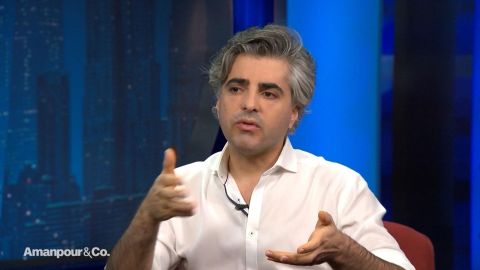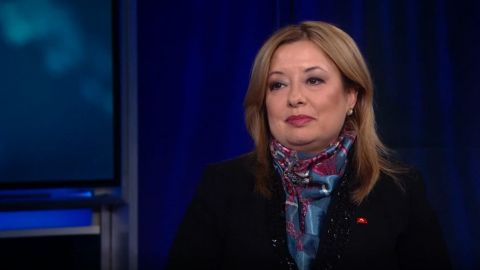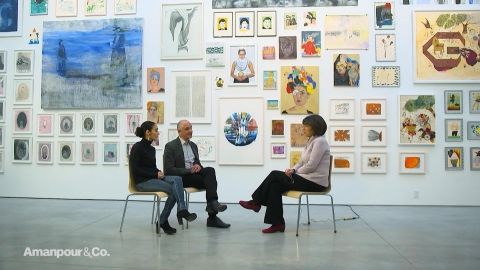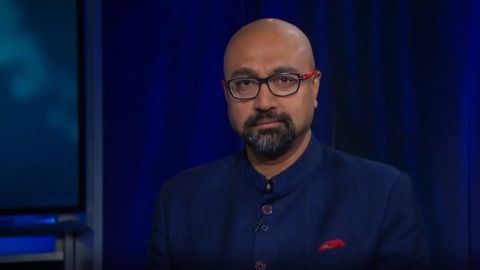Read Transcript EXPAND
CHRISTIANE AMANPOUR: Let me start by asking you, Shirin, what this artistic war represents. Why have you done this?
SHIRIN NESHAT, ARTIST: Well, when I got invited by Center for Human Rights in Iran, I’ve been an advocate for — to make any (INAUDIBLE) that celebrates the work but also raises some funds. I thought the most meaningful way of engaging into that is looking at the trajectory of my own work as an artist whose life has been defined by revolution. And my work is really directly a reflection of my personal life and how you can’t discuss my work without looking at the circumstances that are all political. So, I tried to look at other Iranian women artists mainly living Diaspora, some born the Islamic revolution and some born after, some coming out of Iran voluntarily, some fleeing because of the political situation, some being brought by their family. But regardless, every one of them have an obsession with Iran. And how their lives of immigrants and how their resolved or unresolved relationship to Iran seems to be a defining point in their work.
AMANPOUR: And Hadi, you are head of the human rights organization for Iran, what is it about art that can raise awareness about human rights. Why have you partnered with Shirin on this?
HADI GHAEMI, EXECUTIVE DIRECTOR, CENTER FOR HUMAN RIGHTS IN IRAN: Well, we think arts and culture are extremely important for both defending artistic freedom in Iran and artist have some freedom of expression is the major issue. And so, Iranian artists, especially post-revolutionary generation have so many experiences of war, revolution, exile, repression and they use their art to communicate that. And we think that our message can really reach a much broader public through art, music and film. So, we have chosen to put a lot of attention to that because we don’t want preach to the converted, we want to really build the culture of tolerance, respect for freedom of expression and artistic freedoms in Iran.
About This Episode EXPAND
Bobby Ghosh joins Christiane Amanpour to discuss this year’s NATO summit and analyze tensions between Presidents Trump and Macron, then Gülnur Aybet explains President Erdogan’s role in the situation. Shirin Neshat and Hadi Ghaemi unpack the significance of a new exhibition of female Iranian artists. Feras Fayyad tells Hari Sreenivasan about his new documentary “The Cave.”
LEARN MORE



